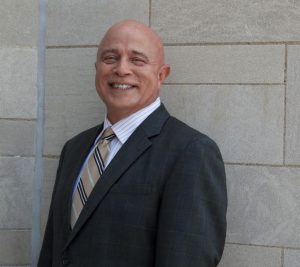 My bulletin article this week is something I have touched on before. And it’s about something that I am utterly and admittedly not an expert. However, because of the nature of my job, I have the opportunity to know people, talk with educated people practically every day, and learn things on a regular basis which allows me to learn at least a little from the very best.
My bulletin article this week is something I have touched on before. And it’s about something that I am utterly and admittedly not an expert. However, because of the nature of my job, I have the opportunity to know people, talk with educated people practically every day, and learn things on a regular basis which allows me to learn at least a little from the very best.
Just to name a few, Fr. Chas, Fr. Brian, the staff at Amazing Parish, and the team at Dynamic Catholic (Matthew Kelly’s organization) are all people who are solidly immersed in daily prayer, and daily prayer that works. My personal religious formation consisted largely of people who helped me to memorize prayers. They were mostly the prayers of the rosary, with a few wild cards thrown in. My catechism teacher in first grade (whose last name, coincidentally was Bihl), certainly knew that I was quite often in need of an act of contrition, and thank God, I will remember that one on my deathbed even if I am in the throes of dementia.
However, when I reminisce, it was almost as though I had been given a paint set, taught my colors, and then not provided with a brush. I really had no clue about how to pray–how to use prayer to make a difference in my life and potentially in the lives of others. As a child, when I prayed, I simply ran through the list of prayers I had memorized and then I was finished. And even though I knew the prayers of the rosary, saying a complete rosary was as intimidating as calculus would be to a typical eight-year-old child and really “something only old ladies did.”
Prayer is spiritual exercise. And much like physical exercise, even though we can all intellectually agree on the idea that it will make us better, we all tend to spend time on things that provide immediate gratification instead of things that pay off in the long run.
If you do some homework, you will find great Catholic resources that describe anything from four to nine types of prayer. In one form or another, they all mainly speak to:
- Adoration: Praising God
- Contrition: Asking for God’s forgiveness
- Petition: Asking God for outcomes
- Thanksgiving: Showing God gratitude
- Meditation: Simply spending time in God’s company
Recently, Dynamic Catholic provided us with a prayer card (that has been posted to our Facebook page) that, using again the analogy of physical exercise, is a prayer workout. What I found to be both useful and ingenious is that this routine can be a two minute process, or an hour or more, depending upon the variables that all of us face in our lives. When I discussed it with Clare Kolenda, our youth group leader, she perceptively said, “This is a real blueprint on how to have a conversation with God!”
Here it is (reprinted with permission of Dynamic Catholic) with very minor revisions:
The Prayer Process
Step 1: Gratitude. Begin by thanking God in a personal dialogue for whatever you are most grateful for today.
Step 2: Awareness. Revisit the times in the past 24 hours when you were all you could be, and when you were not. Talk to God about these situations and what you learned from them.
Step 3. Significant Moments. Identify something you experienced the last twenty-four hours and explore what God might be trying to say to you through that event (or person).
Step 4. Peace. Ask God to forgive you for any wrong you have committed (against yourself, another person, or Him) and to fill you with a deep and abiding peace.
Step 5. Freedom. Speak with God about how He is inviting you to change your life, so that you can experience the freedom to be the best version of yourself.
Step 6. Others. Lift up to God anyone you feel called upon to pray for today, asking God to bless and guide them.
Step 7. Pray the Our Father.
As with anything, the more you do it, the better you will be.